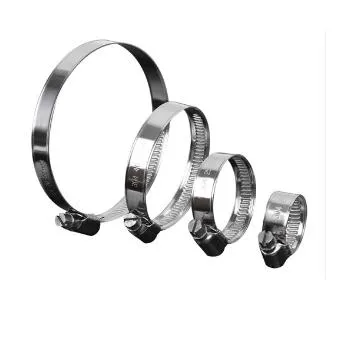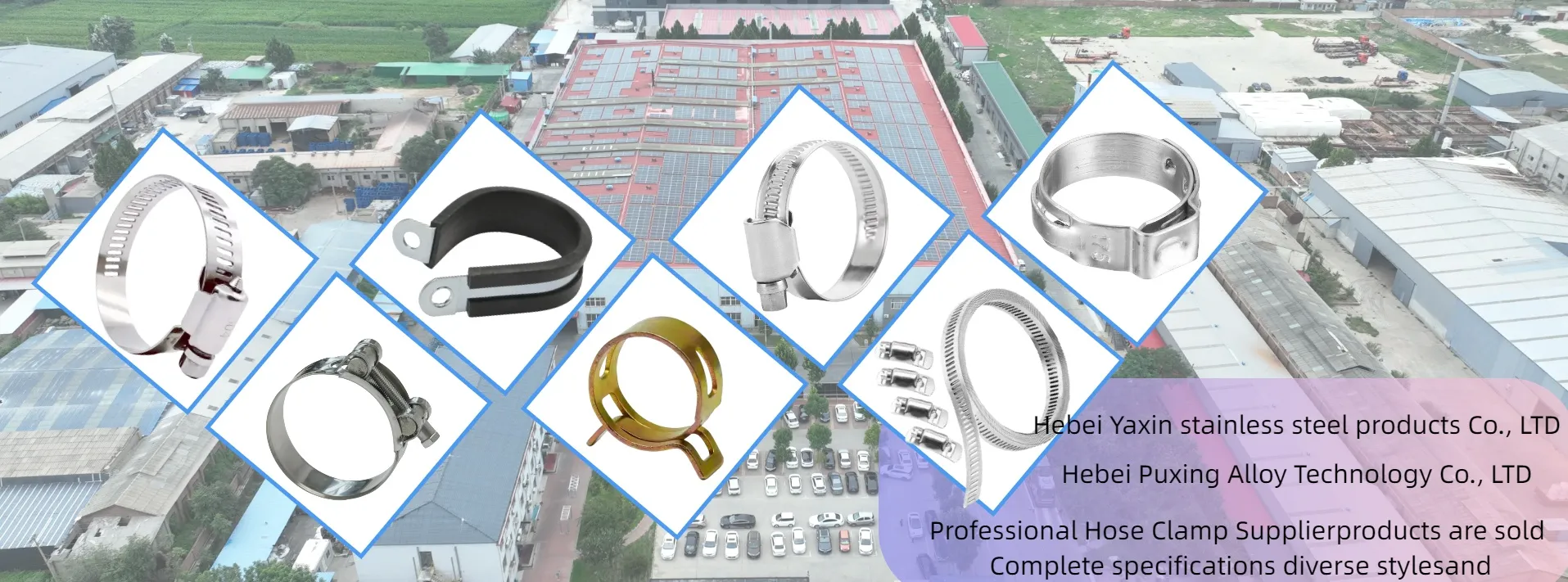- Phone:+86-17331948172 +86-0319-8862898
- E-mail: inquiry@puxingclamp.com
Jul . 28, 2025 10:52 Zréck op d'Lëscht
Maintenance and Longevity: Prolonging Worm Hose Clamp Lifespan
In industrial and automotive systems, hose clamps are unsung heroes, ensuring secure connections in fluid, gas, and vacuum applications. For wholesalers supplying worm hose clamps, vacuum hose clamps, and twin hose clamps, understanding maintenance best practices is critical to maximizing product lifespan and reducing replacement costs for bulk buyers. This article explores proactive strategies for extending the durability of these clamps, tailored to the unique demands of each type, while offering insights for wholesalers to enhance value in high-volume markets.

Worm Hose Clamps: Combating Corrosion and Wear
Worm hose clamps, characterized by their screw-driven band design, are widely used in plumbing, automotive, and systems. Their lifespan hinges on mitigating two key threats: corrosion and over-tightening.
Material Choice: Opt for 316 stainless steel worm hose clamps in humid or saltwater environments. Avoid low-grade stainless or galvanized steel, which degrade rapidly.
Lubrication: Apply silicone-based lubricants to screw threads to prevent seizing, especially in high-temperature settings.
Use torque-limiting screwdrivers to ensure consistent pressure without stripping threads or deforming hoses.
Educate clients on the risks of excessive torque, which can crack plastic fittings or cut into soft hoses.
For wholesalers, stocking worm hose clamps with pre-applied anti-seize coatings simplifies maintenance for bulk buyers in marine or chemical industries.
Vacuum Hose Clamps: Preserving Seal Integrity Under Pressure
Vacuum hose clamps maintain airtight seals in systems like brake boosters, medical devices, and industrial suction lines. Their longevity depends on preserving flexibility and preventing leaks.
Pair vacuum hose clamps with EPDM or silicone hoses, which remain flexible under negative pressure. Avoid stiff materials that crack and compromise seals.
Use clamps with serrated bands to grip hoses securely without slippage.
Recommend bulk buyers replace vacuum hose clamps every 3–5 years, as prolonged stress can cause band fatigue.
Check for deformation or cracks in the clamp band, which indicate imminent failure.
Wholesalers should highlight clamps with integrated rubber liners, which reduce hose wear and extend service intervals in automotive or pharmaceutical applications.
Twin Hose Clamps: Enhancing Durability Through Redundancy
Twin hose clamps, featuring dual bands, excel in high-vibration environments like diesel engines, hydraulic systems, and agricultural machinery. Their design distributes stress, but maintenance is key to preventing uneven wear.
Ensure both bands of twin hose clamps are tightened evenly to prevent one band from bearing the entire load.
Use specialized pliers with dual-head designs to apply uniform pressure during installation.
Position twin hose clamps at least 1 inch apart on large-diameter hoses to minimize flex points.
Inspect for "band creep" (gradual loosening) in high-heat environments, retightening as needed.
For wholesalers, offering twin hose clamps with laser-etched torque guidelines adds value, helping clients avoid installation errors.
Wholesale Strategies: Maximizing Worm Hose Clamp Lifespan at Scale
Material Certification: Source worm hose clamps and twin hose clamps with mill test reports confirming alloy composition. For vacuum hose clamps, prioritize certifications for medical sectors.
Bundled Maintenance Kits: Pair clamps with compatible lubricants, installation tools, and inspection checklists to streamline client workflows.
Climate-Controlled Storage: Store clamps in low-humidity warehouses to prevent pre-delivery corrosion, especially for stainless steel products.
Supplier Training Programs: Partner with manufacturers to educate buyers on proper installation and maintenance via webinars or manuals.
By emphasizing durability and ease of maintenance, wholesalers position themselves as partners in reducing downtime and operational costs.
FAQ: Worm Hose Clamp Maintenance and Longevity
How often should worm hose clamps be inspected in marine environments?
Inspect 316 stainless steel worm hose clamps every 6 months for salt deposits or pitting. Replace immediately if corrosion breaches the surface.
Can vacuum hose clamps be reused after removal?
Avoid reusing vacuum hose clamps, as their bands often deform during installation. Reuse risks leaks, especially in high-suction systems.
What makes twin hose clamps more durable than single-band clamps?
Twin hose clamps distribute mechanical stress across two bands, reducing the risk of sudden failure in high-vibration applications like heavy machinery.
Are polymer-coated worm hose clamps worth the higher cost?
Yes. Coatings reduce friction and corrosion, extending lifespan in abrasive or chemically aggressive environments.
How should wholesalers store worm hose clamp inventory?
Store worm hose clamps and twin hose clamps in sealed, moisture-proof packaging. Keep vacuum hose clamps away from UV light to prevent polymer degradation.
For wholesalers, the longevity of worm hose clamps, vacuum hose clamps, and twin hose clamps hinges on proactive maintenance, material quality, and client education. By prioritizing certified alloys, offering maintenance-focused bundles, and fostering supplier partnerships, distributors can deliver products that withstand industrial demands while minimizing lifecycle costs. In an era where reliability drives procurement decisions, these strategies ensure wholesalers remain indispensable to automotive, manufacturing, and aerospace clients worldwide.
Moreover, incorporating user feedback into product design and continuously improving upon existing models enhances customer satisfaction and loyalty. Wholesalers can further strengthen their market position by providing comprehensive technical support and training programs, ensuring clients are equipped to maximize the performance of their hose clamp solutions. By staying abreast of industry trends and anticipating future needs, wholesalers can innovate and adapt, solidifying their role as trusted partners in the global supply chain.
-
Material Selection for Corrosion Resistance and Durability in 1.5 Hose Clamps
NeiegkeetenJul.28,2025
-
Maintenance and Longevity: Prolonging Worm Hose Clamp Lifespan
NeiegkeetenJul.28,2025
-
Installation Challenges and Tool Requirements Across 104 Hose Clamp
NeiegkeetenJul.28,2025
-
Innovations in Spring Hose Clamp Technology: Smart and Sustainable Solutions
NeiegkeetenJul.28,2025
-
Formability and Fabrication Techniques for 201 Stainless Steel Strips
NeiegkeetenJul.28,2025
-
Corrosion Resistance in Environments: A Guide for Washer Hose Clamps
NeiegkeetenJul.28,2025




